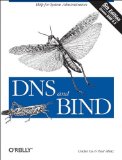 Recently I had a conversation with a number of blog developers about proper use of domain names and sub-domains when you are developing your website and infrastructure.
Recently I had a conversation with a number of blog developers about proper use of domain names and sub-domains when you are developing your website and infrastructure.
The debate was centered around whether or not to use www. in front of a domain name and if so why.
To be fair the people having the conversation were more likely to be concerned about how their site looks on the web and not so much its overall function either as a multi-server enviroment or as an eventual structure for a corporations internet services but even if they are just hosting one Blog its no excuse to throw away proper configuration of your website.
And in all honesty I was probably the only one in the debate old enough to remember a time before there were webservices or a need for www. to be taged in front of your domain to identify the webserver.
So, without going into how to setup the dns lets just look at some of the uses of subdomains.
Lets say you have one website and the company offers file downloads or an anonymous ftp server. Even if that server is the same physical computer as your website there are advantages in setting up a subdomain of: ftp.host.com and using that account to host your files or anonymous uploads.
First you are segmenting your accounts. You have a folder that is within your main account that is dedicated to transfer of files. Even if you just link to them from your website you still have a nice way to control where the files go. However if you decide to allow public ftp services you can make a ftp account just for that subdomain.
ftp.host.com user:anonymous pass:none
you could even dedicate that account to a Public folder within the ftp subdomain account
ftp.host.com user:anonymous FOLDER /public_html/ftp/uploads
and also have an admin account on that subdomain that has full access to all the files on that subdomain.
ftp.host.com user:admin FOLDER /public_html/ftp
Now that is a pretty easy concept but what if your service grows and you end up with 4 computers in your rack just because the load is so high.
One for www.host.com website services
One for mail.host.com mail services
One for ftp.host.com ftp services
One for dns1.host.com dns services
In all practicality it could end up that way in a remote rack for a popular site or hosting service but in a intranet or corporate setting the presence of many different servers that provide many needs that are not just failover or cluster computers is very likely.
Also in the situation of Mail to a domain you may want to set your dns to accept mail from your main domain.com and use other servers for outgoing smtp.host or reading pop3.host or spit internal and external mail or you may have a number of mail servers that all use the same domain but identify based on port …. it can get slightly tricky but the main premise is still there.
So although there are reasons for strange domains like del.icio.us
You should also setup your DNS server to address www.icio.us AND icio.us
Type either of those in your browser and see what you get. Better yet ping them and see if you are forwarded to the correct website.
Ping request could not find host icio.us. Please check the name and try again.
This is just a waste
and it is not proper use of the domain name naming system.
They could be losing lots of traffic but maybe they think its not worth their time.
However if you are wondering if you should follow proper naming conventions then think about why they were developed in the first place.
Anyway don’t be stupid and miss customers or visitors because you didn’t add a www. CNAME to your settings to catch people and shoot them to your website.



